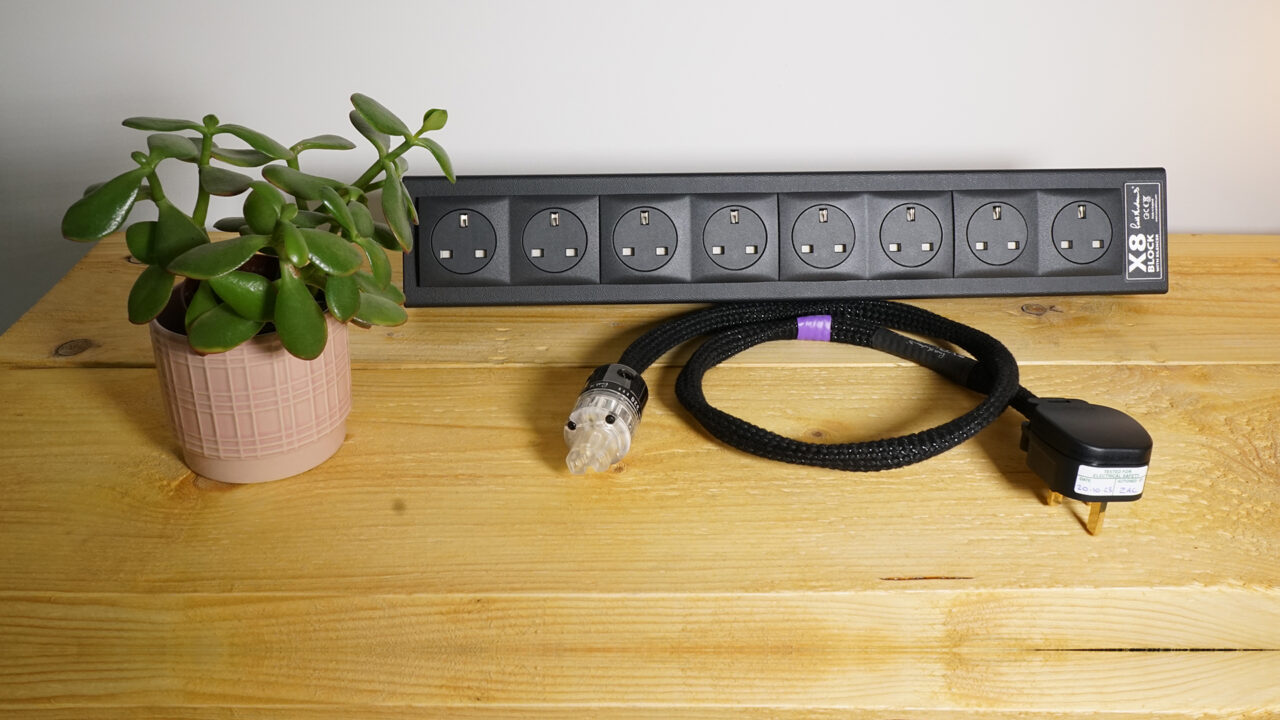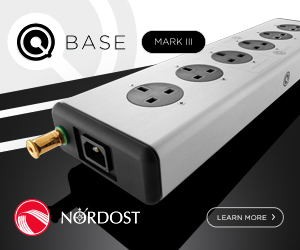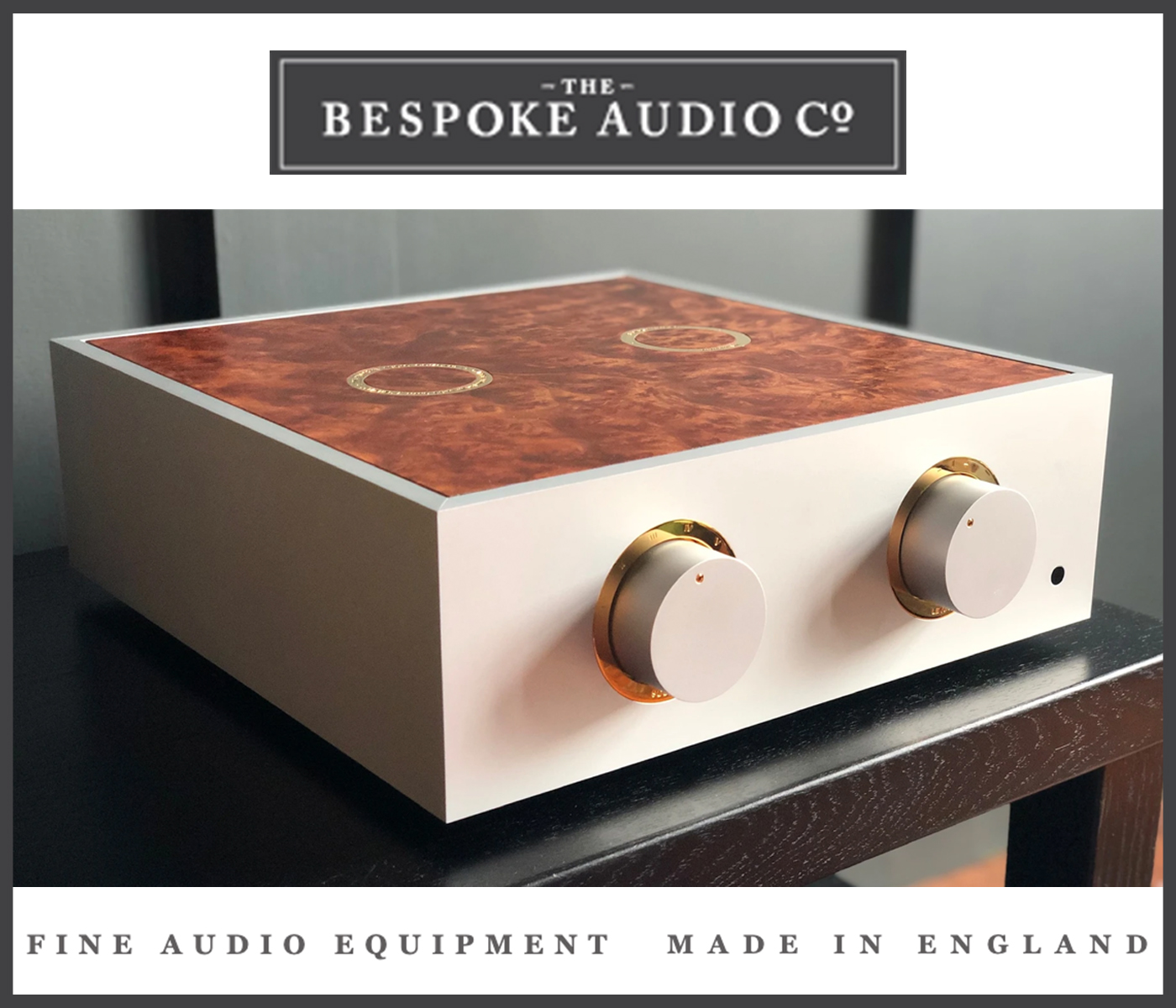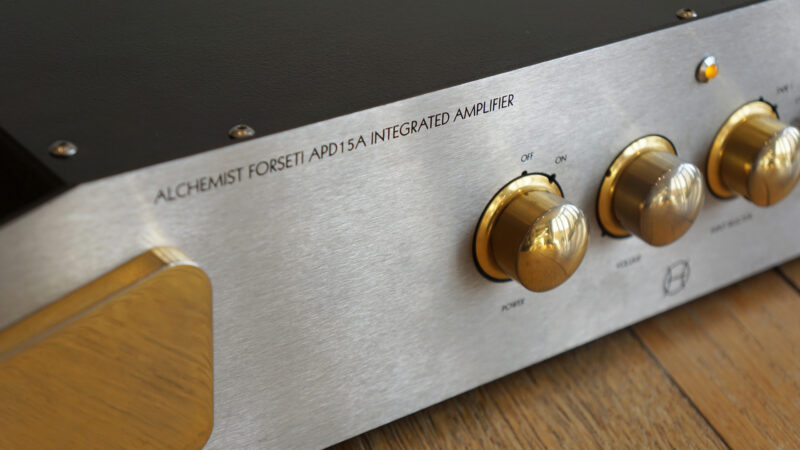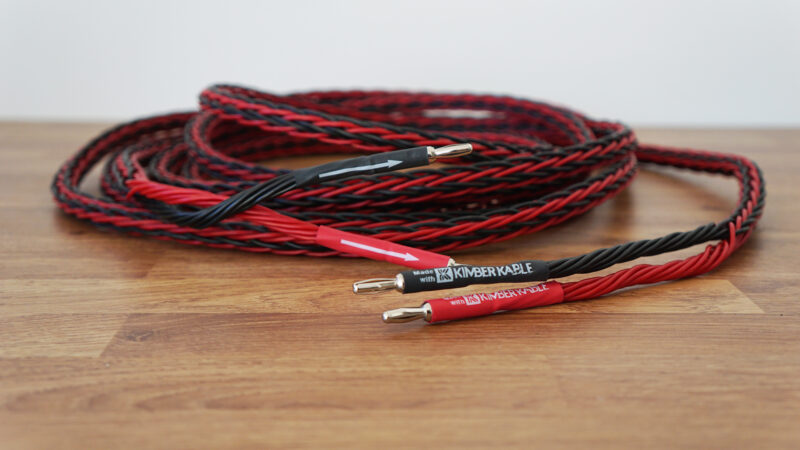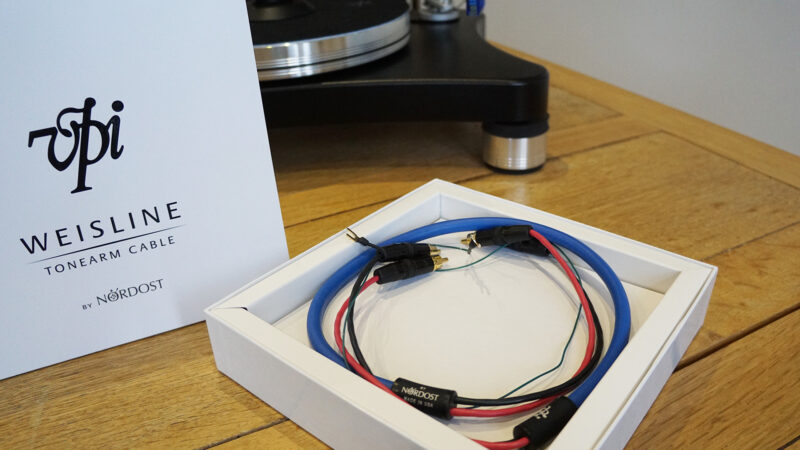While it’s generally accepted that dedicated hifi cables can make a positive difference to the sounds of our audio gear, the focus tends to be on loudspeaker cables and interconnects, as the veins and arteries that link our systems together.
But what about starting right at the source with the all important mains that feeds our hifi separates the vital power that they need in the first place?
Step forward hifi mains and cables specialist Russ Andrews Accessories, which has had skin in the audio wires game for decades.

The X8 Block is the largest in the X-Block range with six, four and twin outlet models also on offer, with USA and Euro outlets also available
On the distribution block side, Russ and the team offers three distinct ranges, with the cyclist’s breakfast sounding PowerBar model at the entry level point, followed by the X-Blocks and then the hi-end PowerBlock. The first two ranges look more like convention mains extension blocks with sockets arranged in series, with the X-Blocks being beefed up versions of the PowerBars, while the flagship PowerBlock model comes in its own upright case with faceplate type sockets you’d tend to find permanently mounted within a house wall.
Many from the block
Each range then offers multitudes of optional outlets to feed up to eight separate devices.
We opted for the X-Block series in the middle of the pack, which starts at £242 for the twin gang model, with four, six and eight outlet offerings with ascending price tags.
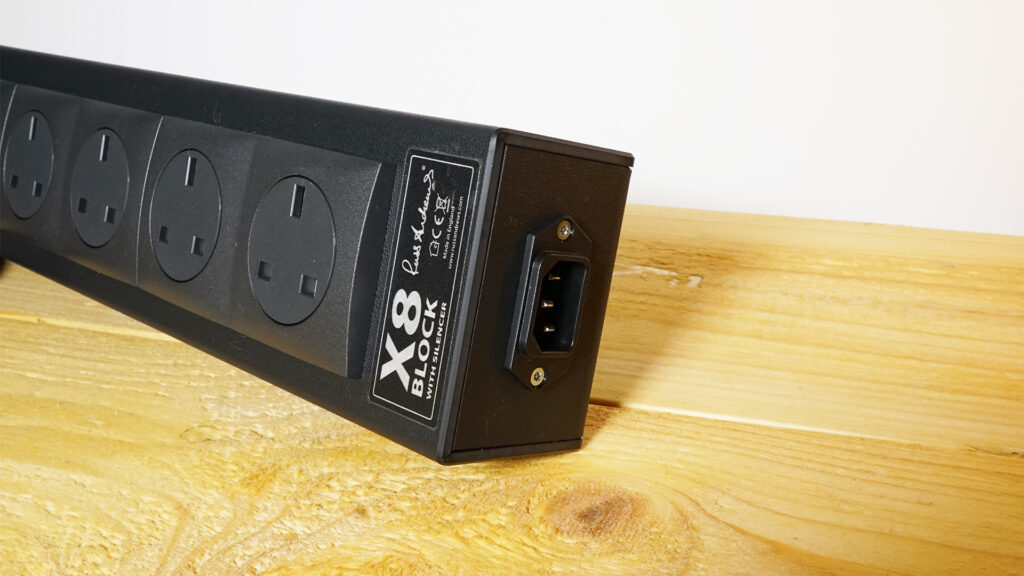
X-Block models hides a wealth of quality internals with Kimber wiring, surge protection and Russ’s proprietary silencer tech. IEC outlet allows for a mains cable of your choosing, including from Russ’s extensive range
As a reviewer with a tendency towards dedicated separate pre/power amps, DACs, streamers, turntables, phono stages and to future proof for inevitable additional gear, the eight gang is the obvious choice. It’s also a good test of the mains provider, having to service more, rather than less, individual components at once, while not compromising on performance.
Designed and built in house, the X8 at £602 uses custom made casework and features eight of Russ’s own UltraSockets on its topside with deep cryogenically treated 13A sockets. Each socket sports nickel plated connections and is individually wired with Kimber’s TCX hyper pure copper cable. It also gets an inbuilt Russ Andrews mains silencer filter and SuperClamp surge protection, with a standard 10A IEC input socket.
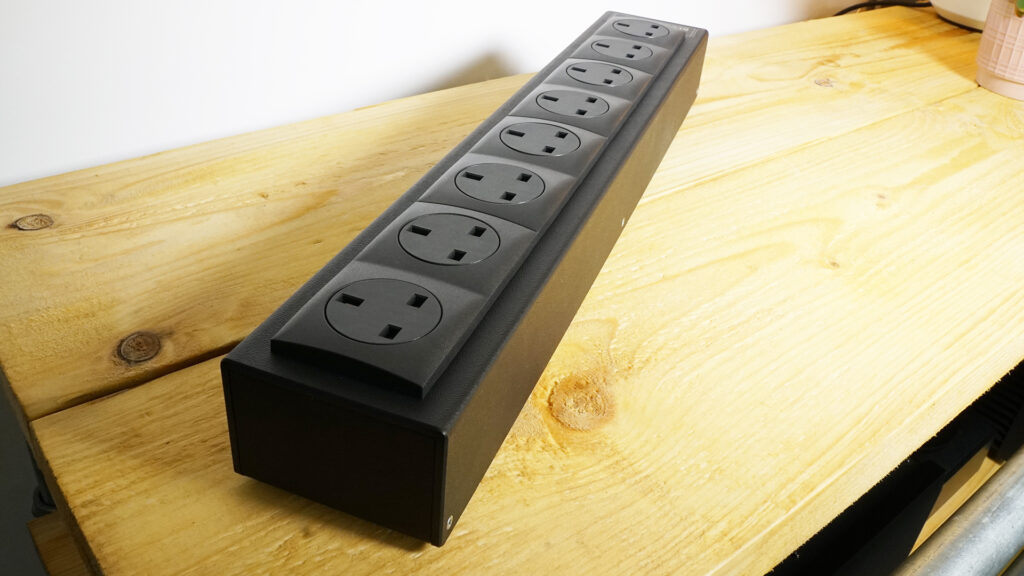
Well spaced sockets and internals account for the X8’s 525/65/85mm (LHW) dimensions
The X8’s outer case is formed from tough high-impact and fire resistant UL 94-VO plastic, which feels solid and durable in the flesh. The faceplates are also nicely raised and separated, making it easy swap out plugs because you’re not fighting for finger space.
On its underside, the X8 gets four rubberised feet to aid grip and prevent scratches. And while screw heads are kept to a minimum, those that are on show are recessed and add to the X8’s industrial styling.
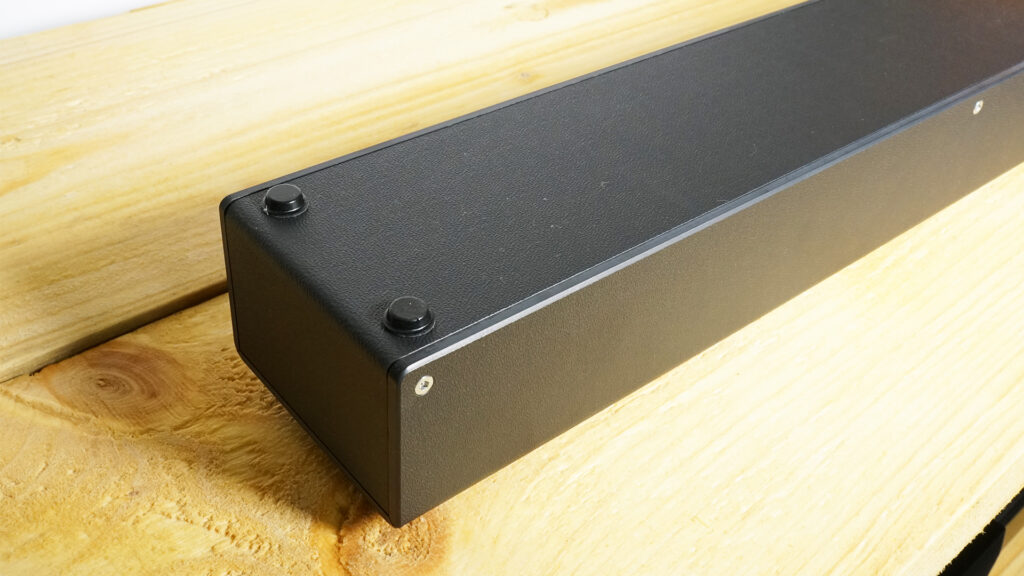
Simple looks and solid build includes rubberised feet for added grip
New power evolution
With such a well thought out mains distribution block, as the saying goes we’d be cutting off our noses to not include an equally well considered mains cable to feed it. The natural choice is Russ’s Evolution PowerKord range, which occupy similar price points as the X-Blocks.
The line-up starts with the Evolution-100 model, which hosts eight separately insulated Kimber Kable conductors, woven together to reduce Radio Frequency Interference (RFI), priced at £262 for 1m. We went one better though, specifying the Evolution-300 which ups the ante with 16 separately insulated Kimber Kable conductors, costing £440 for a 1m length (1.5m and 2m lengths are also available as standard).

Russ Andrews’ Evolution-300 PowerKord is an obvious partnering cable for the X-Block series
Other features include an updated approach to Russ’s ‘earth down the centre’ woven layout of earlier PowerKords, with a new low-induced noise earth cable that’s helically wound around the outside of the live and neutral strands. And while the internal braid pattern may look familiar in Russ’s house style (like the 8PR speaker cable we tested in July ’22), the internal copper is a step up in purity over the previous generation.

Evolution-300 with outer jacket removed, revealing its internal weave and helically wound earthing
Completing the quality materials is the outer jacket, which is made from Russ’s noise reduction sleeving with twin strand thickness, aiding flexibility.
Terminating plugs are just as well spec’d, with an audio quality mains plug sporting the biggest sleeving clamp I’ve ever seen. At the other end, a clear plastic IEC connector is as heavy duty as they get, to ensure a solid connection and lifetime of service. Overall the cable feels both solid and yet flexible for practical use.

All important IEC connector is top quality for a solid connection
Performance
I should begin by explaining my listening room‘s current power distribution (partly to sway the naysayers who argue that 1m of mains cable attached to 30m plus of old ring main is bound to have limited benefits). It has its own mains supply and consumer unit, with a dedicated feed to my hifi. For testing purposes it also has sockets nearby on the ring main, allowing me to compare and contrast between the two. All cabling is less than two years old and regularly tested, ensuring a neutral platform in which to install the Russ Andrews pairing.
Partering gear is turntables by Vertere and VPI, Musical Fidelity M6 pre/power amps, Primare R32 phono stage, NP5 Prisma MKII and NP30 streamer/DAC and Perlisten loudspeakers.
Having run these cables in my system for some weeks across a range of reviews, what’s notable is a general sense of reduced background noise, as though a subtle layer of white noise I wasn’t previously as aware of has been dialled down a few notches.
Comparing across both the dedicated supply and ring main outlets makes this is more notable with the latter, with the Russ mains solution’s services being called upon a little more in the filtration and silencer stakes, given everything else I have plugged into this circuit (lamps, charges, IT hardware and even a fridge).
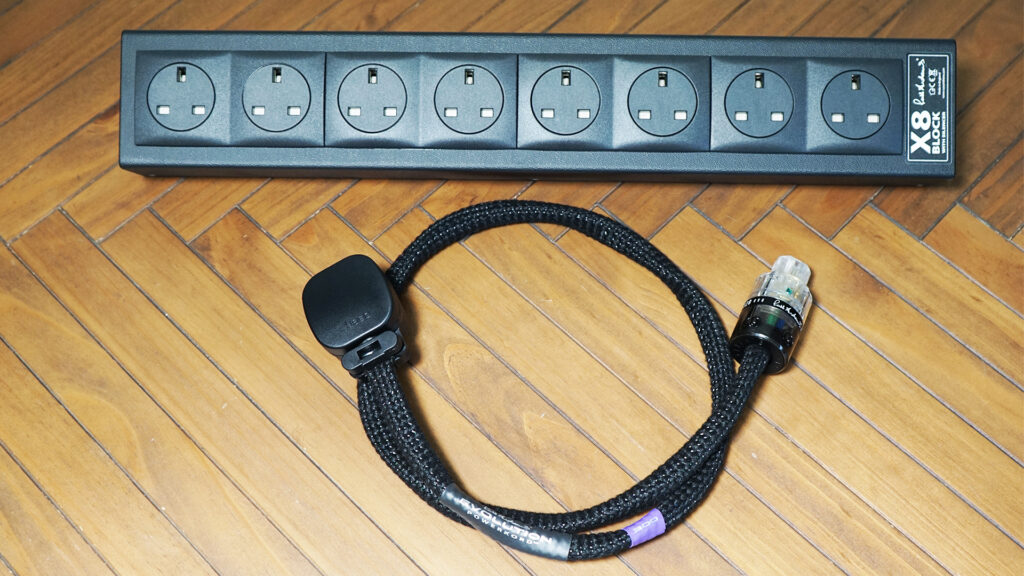
While it’s likely they’ll be hidden from view in most systems, the Russ Andrews products look good enough to proudly display with the rest of your system
Could it be magic
Another anomaly I’ve noticed with the Russ Andrews’ mains package in tow is improvements to my power amp’s performance. Those familiar with Musical Fidelity’s M6 PRX will be aware of its valve amp influenced choke regulated power supply internals, and when nearby I can often hear the amp’s power cycles. With the Russ Andrews kit serving my system however these cycles are notably quieter. Whether this is due to the Russ gear helping to place less demand on the chokes I cannot say, but the MF seems to revel in the supply it’s being fed, much more so compared to the off the shelf mains block I’d been using previously.
Hearing Future Island’s Ran track at 16-bit/44kHz via Qobuz with the Russ Andrews’ gear providing the juice and there are greater levels of separation between the fast paced bass guitar and keyboards, where before there was slight blurring at the extremes where their notes cross over. Likewise, when the rapid fire percussion kicks in, it’s the greater degrees of stop/start precision without overlap that shows how the Russ Andrews mains treatment is adding value. Everything sounds that little bit crisper and better articulated. It’s not so much that my system sounds better or improved, it’s more of a sense that I’m hearing more of it without it being stifled or held back, with levels of noise and compromise that bit more removed.
Getting down and funky with Boz Scaggs JoJo track at 16-bit/44kHz provides a greater litmus test for the added power supply treatment. The contrast between the track’s dynamic peaks and brief silences are that bit better defined thanks to the X8 and PowerKord combo, with the percussion having more polish to its punch and the quieter sections being darker in texture. Elsewhere while the soundstage isn’t wider than what I’m used to hearing, the gaps between instruments are more clearly defined, as though the sonic picture being painted is with a firmer brush.
Moving into more musically aggressive territory with Sprints’ Up And Comer at 16/44 and the mix sounds raw and studio fresh thanks to the honesty with which it is presented. Again I’m noticing those murky silences between the visceral verses and the untainted air and space around the lead vocals, which are deeper in the mix than most modern recordings.
In summary
For many their power distribution products will be the last piece of their audio jigsaw, when in fact they’re just as important as every other investment in hifi cables or accessories. While not cheap, you can clearly see where the money’s gone on of this dedicated hardware from Russ Andrews and the quality they offer, bringing benefits to every component they collectively serve.
The X8 Block is the one to start with given what it offers, and adding a matching dedicated mains cable like the Evolution-300 means you’re not compromising right from the off. For me what they add isn’t so much about improving my system’s overall performance, it’s more about how they allow it to truly perform as it should without sounding held back. Recommended without hesitation.


